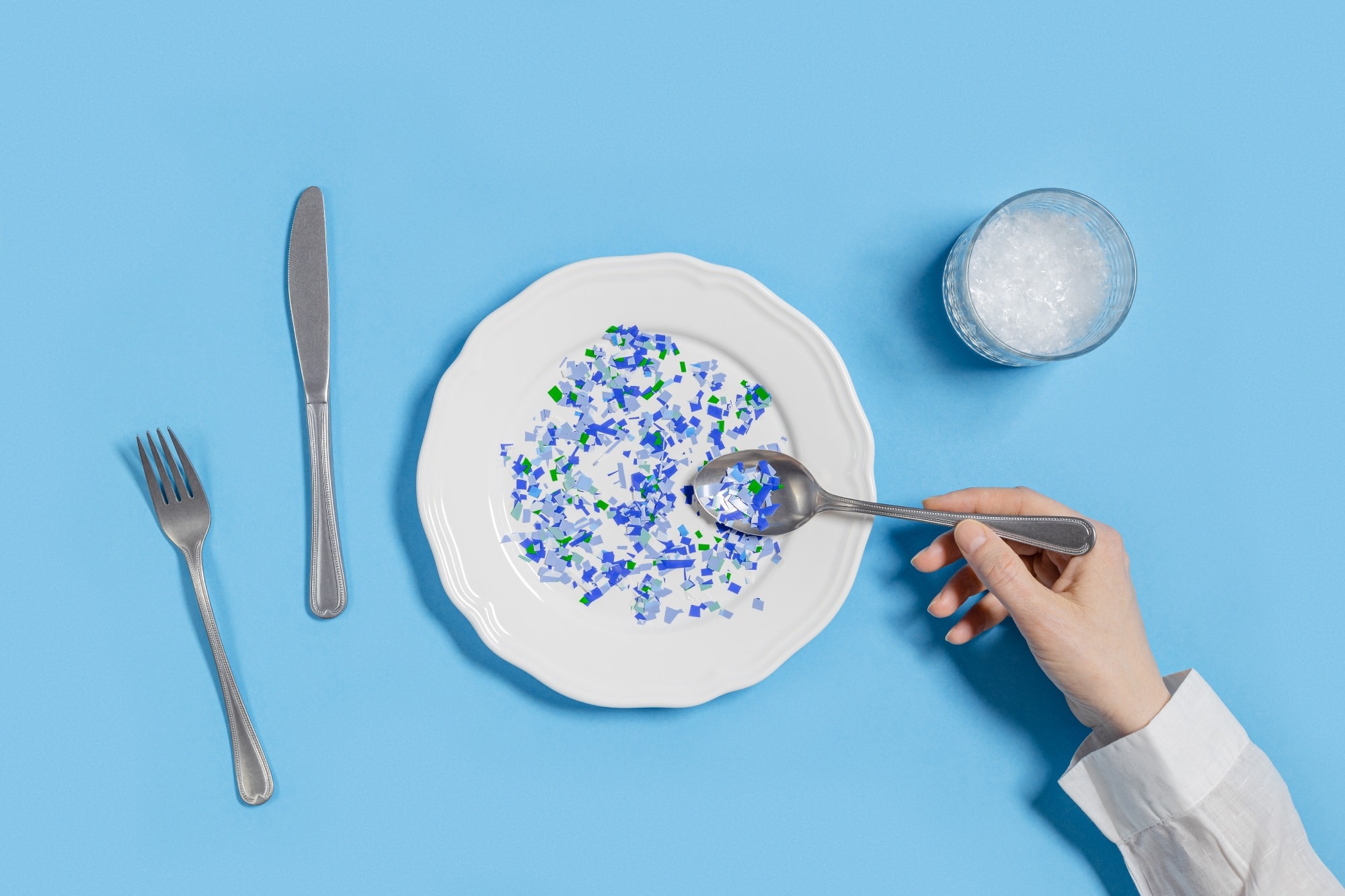In a recent article published in eBioMedicine, researchers in Xiamen, China, performed a cross-sectional study to assess microplastic (MP) concentrations in the feces of preschoolers, examine potential dietary factors affecting MP exposure in this age group, and explore any potential links between MP exposure and the gut microbiota.
To this end, they analyzed stool samples of 60 children aged three to six and quantified 11 types of MPs using pyrolysis-gas chromatography-mass spectrometry (Py-GC/MS).
 Study: Occurrence of microplastics and disturbance of gut microbiota: a pilot study of preschool children in Xiamen, China. Image Credit: YRABOTA/Shutterstock.com
Study: Occurrence of microplastics and disturbance of gut microbiota: a pilot study of preschool children in Xiamen, China. Image Credit: YRABOTA/Shutterstock.com
Background
Studies have found MPs, ranging in size from a few micrometers up to 5 mm, in human tissues, blood, and stools, suggesting these particles are now widely present among humans. They likely enter humans through plastic containers, e.g., feeding bottles or surrounding terrestrial or marine environments where they are abundant.
Studies have suggested that infants and young children are more vulnerable to MP exposure due to their specific dietary behaviors. Additionally, a recent study showed that differences in breastmilk and formula milk contributed to the higher MP levels in the stools of infants, likely because polypropylene (PP) is one of the raw materials for infant formula bottles.
Ingested MPs likely interact with gut-dwelling microbial flora, leading to disturbances in the host health, which, in turn, could manifest as metabolic diseases. In-vivo evidence suggests that MPs can disturb the gut microbiota diversity and composition, especially probiotics.
So far, several approaches have helped detect MPs in biological tissue samples; however, it remains challenging to detect nano-microplastics (NMPs), which have more hazardous effects.
A 2022 study by Leslie et al. evidenced (for the first time) that Py-GC/MS could reliably quantify MPs in most biological tissue samples, including stools. It precisely quantified the polymers without particle size limitation.
About the study
In the present study, researchers also used Py-GC/MS to evaluate the presence of MPs in the stools of 69 preschool children aged three to six. Py-GC/MS method first degraded products (in a sample) at defined temperatures, separated them by gas chromatography (GC) and then applied mass spectrometry (MS) to enable the detection of specific MPs of any particle size.
Using Py-GC/MS, the researchers established an analytical methodology for 11 polymers: PP, polyvinyl chloride (PVC), polyethylene (PE), polyethylene terephthalate (PET), polystyrene (PS), polycarbonate (PC), polyamide 6 (PA6), polyamide 66 (PA66), polymethylmethacrylate (PMMA), polybutylene adipate terephthalate (PBAT), and polylactic acid (PLA).
They identified each polymer based on its specific characteristics and ionic composition and noted their limit of detection (LOD) and quantification (LOQ).
Further, the team used a method outlined by Zhang et al. to calculate the estimated daily intake (EDI) of contaminants through the diet, measured in μg/kg of body weight per day (bw/d).
Children's parents and guardians received a stool sampling kit for stool collection. They collected the middle portion of the uncontaminated stools using the sterile stool collector for 16S ribosomal ribonucleic acid (rRNA) sequencing and the part that did not come into contact with air or the plate for testing of MPs.
The parents or guardians also completed two self-administered questionnaires. The first enquired about the feeding behaviors and dietary habits of participating children, and the second was a three-day long 24-hour review of their diets. It helped them explore the potential association between MP exposure and gut microbiota.
Results
Py-GC/MS detected four MPs, PVC, PET, PA, and PA6, in 85.5% of stool samples collected from young children. The average concentration of all MPs in the stool was 337.8 μg/g-dry weight (dw).
In addition, the researchers found that dairy intake and the use of feeding bottles contributed to the presence of MPs in preschoolers' stools.
These products are used widely in children's care products and toys. For example, PA6 is a raw material for carpets, textiles, etc., and urban dust has abundant PET.
Further, they noted that children who spent more time eating a meal had higher PVC levels in their stools. Due to its relatively higher density (1.16–1.58 g/cm3), PVC has a higher settling velocity and deposit on items.
Indoors, human activities, such as walking, cleaning, etc., also affect MP deposition. Thus, air purifiers might help reduce MP exposure from the air.
Children might also inhale fine particles present in cigarette smoke that remain airborne when parents smoke in their presence. Splenic filtration can remove MPs greater than 0.2 μm from the bloodstream but not smaller NPs less than 0.1 μm. However, data on the impact of parental smoking on MP exposure among children is scarce.
Furthermore, this study evidenced a negative association between PVC exposure and the Chao1 and Observed_species indices, suggesting adverse effects of MP exposure on alpha diversity of gut microflora of preschool children, especially disturbances to probiotic taxa, such as Alistipes and Parabacteroides.
Linear discriminant analysis effect size (LEfSe) results also revealed that probiotics, including Alistipes (genus), Lactobacillales (order), Streptococcaceae and Rikenellaceae (families) and Streptococcus (genus), were more abundant in the low MPs exposure group.
These bacteria produce short-chain fatty acids (SCFAs), protect intestinal barrier function, and exert anti-inflammatory effects. Lastly, the results suggested that behavioral habits of preschoolers, such as hand-to-mouth transfer, made them more susceptible to MP exposure.
Conclusions
To conclude, this study qualitatively and quantitatively determined the presence of MPs in the stools of young children using Py-GC/MS. Reported MP concentrations were considerably higher than reported by previous studies, likely because of the different detection methodologies used.
Dairy intake, feeding bottle use, and meal duration of children contributed to their MP exposure and perturbed the alpha diversity of their gut microbiota.
Specifically, the concentrations of PE and PVC were negatively related to Parabacteroides and Alistipes, respectively.
Overall, the study data laid out baseline evidence for children's exposure to MPs. It highlights the need for further research with a detailed study design to explore the association between MPs exposure and its effects on gut microflora in humans.